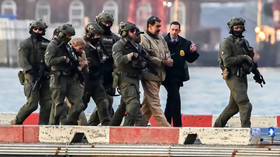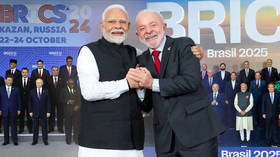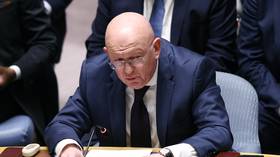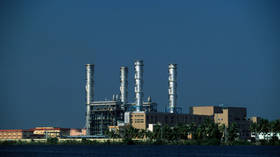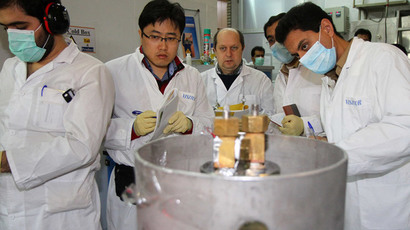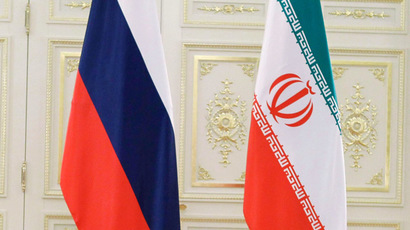US aircraft carriers ‘easy targets’ in event of clash – Iranian naval commander
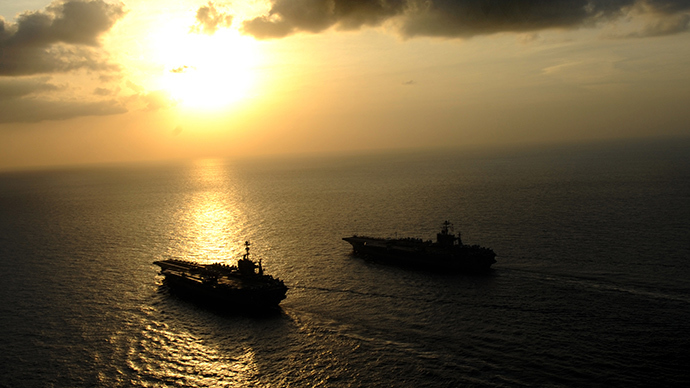
The head of Iran's Revolutionary Guards says his forces have been holding naval exercises involving the use of replica American warships, while the real ones continue to prowl the waters of the Persian Gulf.
As Iranian President Hassan Rouhani continues negotiations with
Western powers over the Islamic Republic’s nuclear program,
Iranian military officials, perplexed by the presence of US
warships in the Persian Gulf, have responded with the occasional
saber-rattling.
US air power overseas is dependent on the ability of its fighter
jets to take off and land on aircraft carriers, and this
“Achilles heel” has made these vessels a natural target
for the IRGC Navy in any possible war, Iranian Admiral Ali Fadavi
told the Fars news agency.
“It is natural that we [place emphasis] during our trainings,
exercises and drills on...becoming prepared for operational
goals; and the Americans and the entire world know that one of
the operational goals of the IRGC Navy is the destruction of the
US Navy,” he said.
Fadazi, who oversees security in the Persian Gulf and the Strait
of Hormuz, said when US vessels want to move across the waterway,
they are contacted by the IRGC Navy and asked to provide the
vessels' identity, purpose, and route of travel, adding,
"If the US warships decline to respond, they will come to
realize right-away that a large number of our vessels have
surrounded them and/or our missiles are locked on them."
"This, of course, does not generally happen," he said.
The Iranian commander said the hulking American warships adrift
in the Gulf would be an “easy target” for the IRGC naval
forces, given that “we have very precise analyses of the
design, construction and structures of these warships and we know
how to act.”
Fadavi, who said his forces are in control of the strategic
Strait of Hormuz, the strategic chokepoint between the Persian
Gulf and the Indian Ocean, demonstrated that he was well-versed in US
military literature when he mentioned a book by Robert Gates
where the former US Defense Secretary discusses the vulnerability
of the US naval vessels to Iranian attack.
“If you take a look at Robert Gates’ book, you will see that
he openly recounts the vulnerabilities of aircraft carriers to
the IRGC Navy and his demand is that the US naval strategy must
change,” Fadavi said.
Last month, an Iranian newspaper reported that Iran's navy was
constructing a replica of the USS Nimitz in in order to be used
in future military exercises.
"We have been making and sinking replicas of US destroyers,
frigates and warships for long years, and we have sunk the
replica of their vessels in 50 seconds through a series of
operational measures," Fadavi said.
An US Navy official in the Gulf rejected the Iranian claims.
"Whatever Iran hopes to do with the mock-up, it is likely to have zero impact on U.S. Navy operations in the Gulf," Cmdr. Jason Salata, a spokesman for the U.S. Navy's 5th Fleet, which is anchored in Bahrain, told AP.
"Firing weapons at a stationary structure floating on pontoons is not a realistic representation of having the capability to target a 100,000-ton warship ... maneuvering at speeds in excess of 30 knots," he said.
The top Iranian official went on to describe the US naval
presence as a source of regional insecurity for the countries on
the Persian Gulf, saying that Iran is committed to securing the
region.
Fadavi noted that Iran has been seeking closer relations with its
Gulf neighbors in an effort to boost regional security, warning
that lack of cooperation among regional countries would only
serve American interests.


